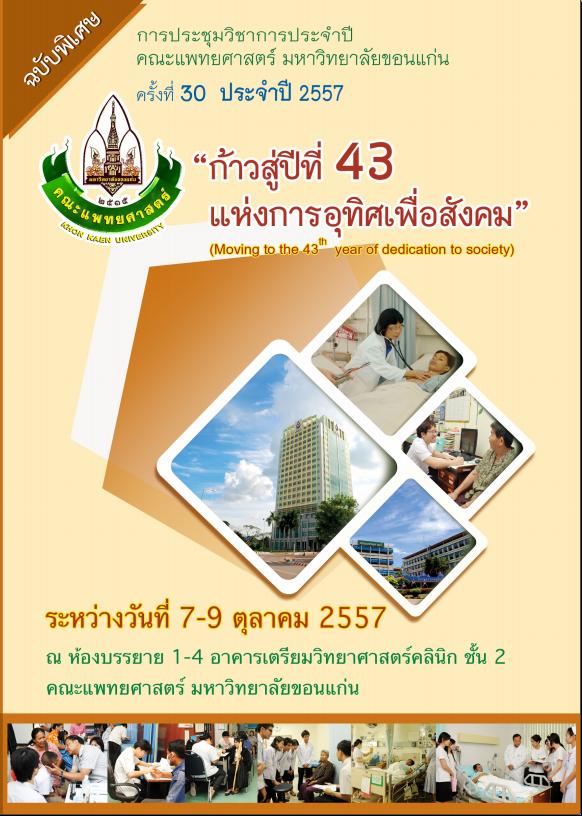Clinical Characteristics Affecting Outcome of Pneumatic Retinopexy in the Treatment of Rhegmatogenous Retinal Detachment in Srinagarind Hospital
Keywords:
pneumatic retinopexy, rhegmatogenous retinal detachmentAbstract
Objective: To evaluate the outcome and clinical characteristics affecting the success of rhegmatogeneous retinal detachment treatment by pneumatic retinopexy.
Study design: Retrospective study.
Methods: A retrospective medical record review was conducted of patients who underwent primary PR from June1998 to June 2012. Data were collected on each patient including age, sex, side, initial best corrected visual acuity, lens status, proliferative vitreoretinopathy grading, presence of vitreous hemorrhage, macular status, presence of lattice degeneration, number and location of retinal breaks, clock hour extent of detachment, type of intraocular gas injection, type of retinopexy, and retinal status at immediate post-treatment and six months later. The data and reattachment rate were analyzed.
Result: The 349 patients were included. The mean age was 51.8 years and 61.3% were male. The retina of 64.0% of patients was reattached after pneumatic retinopexy procedure. The initial visual acuity, age, retinal detachment area, macular status and type of retinopexy were the factors that significantly affected the successful outcome. We found that the area of retinal detachment was the most associated factor for retinal attachment after pneumatic retinopaexy.
Conclusions : The retinal reattachment rate after pneumatic retinopexy is good. This procedure is simple, less invasive technique and cost effective. The proper patient selection increases the success rate of pneumatic retinopexy treatment in rhegmatogenous retinal detachment.




